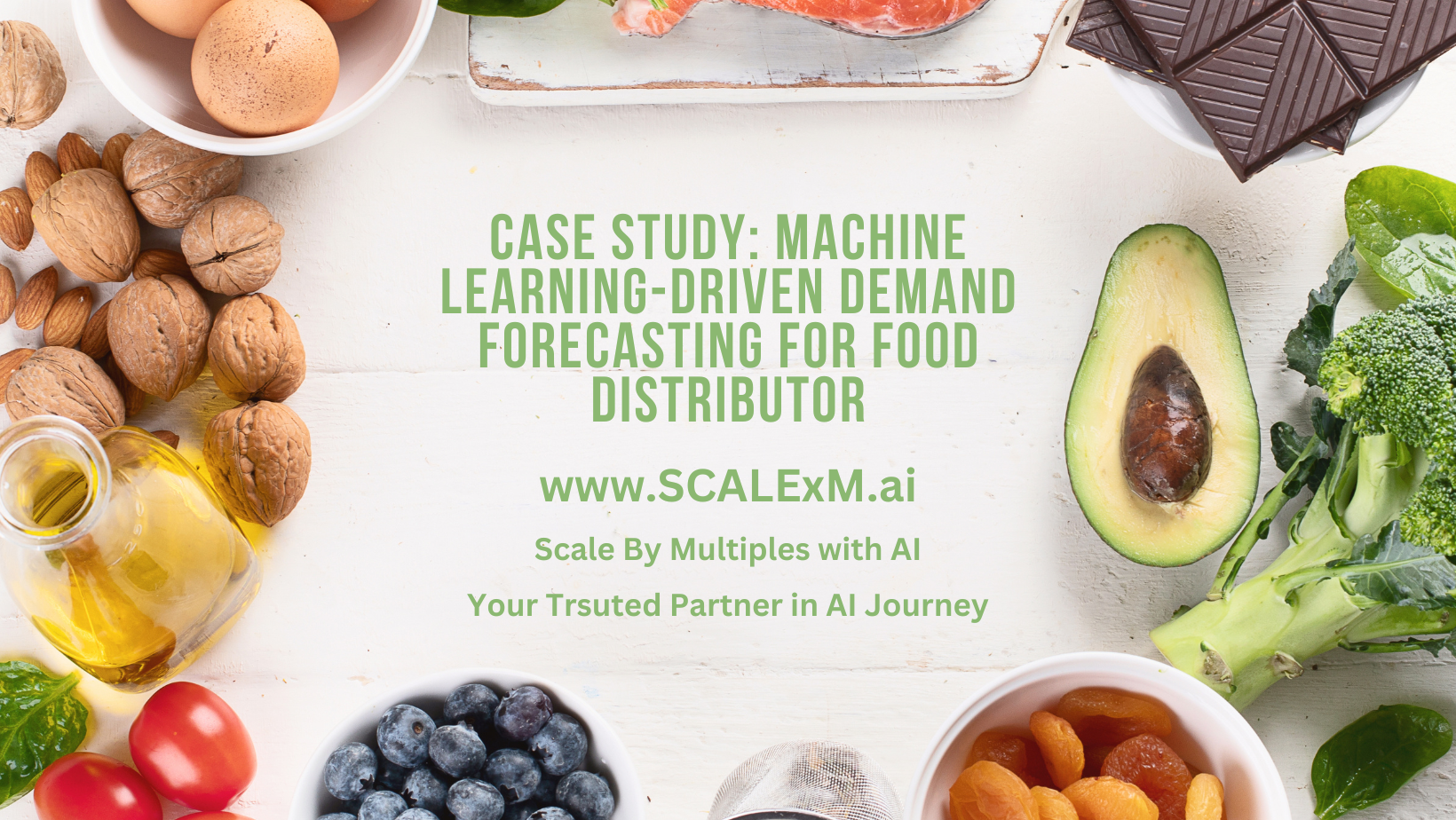Case Study: Machine Learning-Driven Demand Forecasting for Food Distribution Client

Case Study: Machine Learning-Driven Demand Forecasting for Optimized Inventory in Food Distribution
Client:
A leading distributor of natural and organic, specialty, and fresh products in North America, our client has carved out a significant market presence over several decades. With a focus on sustainability and quality, they serve a diverse range of customers, including major grocery chains, natural food stores, and independent retailers.
Business Problem:
- The client faced challenges with their existing demand forecasting methods. Relying solely on sales team inputs led to inconsistencies between expected orders and actual sales. This discrepancy resulted in excessive inventory, impacting both operational efficiency and profitability.
Solution:
- In collaboration with the client, we developed a comprehensive AI solution to enhance their demand forecasting. Utilizing three years of historical sales, production, and inventory data, we initiated the process with exploratory data analysis to gain deeper insights into demand patterns.
- Products were categorized into A, B, and C classes based on their historical monthly demand. We focused our efforts on forecasting demand for high-demand "A" category products. Various time series algorithms, including ARIMA, Holt-Winters, and RNN LSTM, were evaluated. The Holt-Winters model was chosen for its superior performance, achieving demand forecasting accuracy levels of 90-92%.
Outcome:
- The implementation of the AI model led to significant improvements in demand prediction accuracy, particularly for high-demand products. This enabled the client to optimize their inventory management and production planning, thereby reducing excess inventory and minimizing the risk of stockouts. The new approach streamlined operations, improved resource allocation, and bolstered overall business performance.
Technology Used:
- The solution was developed on Microsoft's Azure cloud platform, leveraging Azure Machine Learning for model development and data analysis. Azure Time Series Insights was used for real-time analytics and visualization of the demand data. For time series forecasting, we employed Azure's built-in capabilities for ARIMA and Holt-Winters algorithms. Azure Databricks was used for data engineering tasks and to run the RNN LSTM models. Data storage and management were handled by Azure SQL Database, which provided a scalable and secure environment for our data needs. Power BI was used to create interactive dashboards for monitoring the performance of the demand forecasting system.

